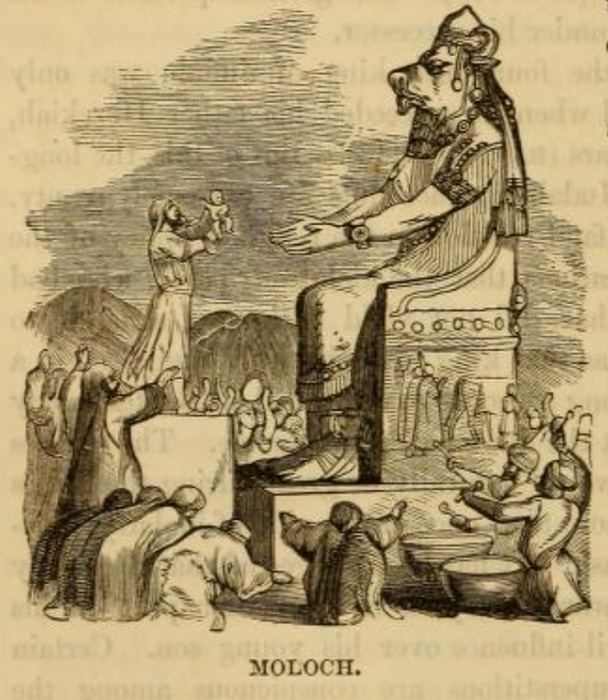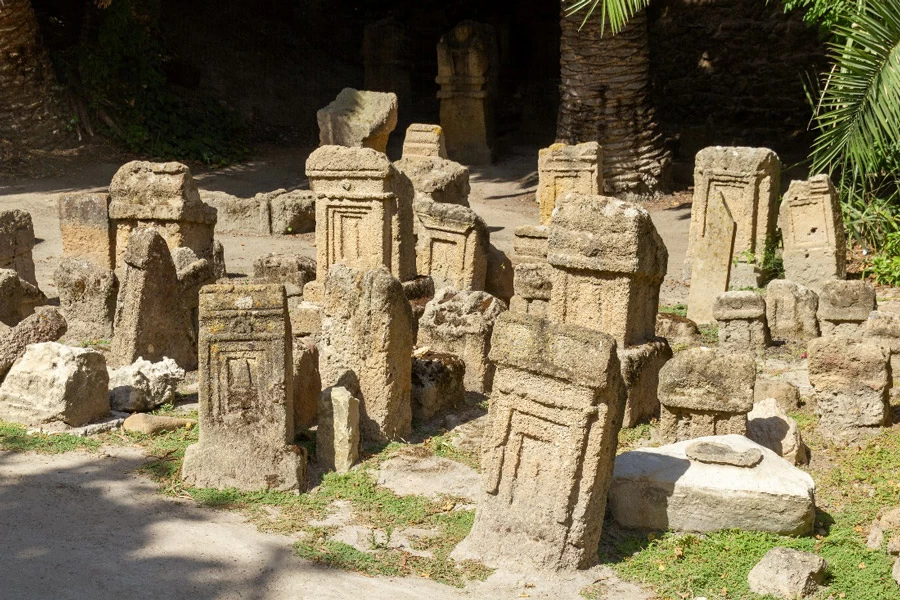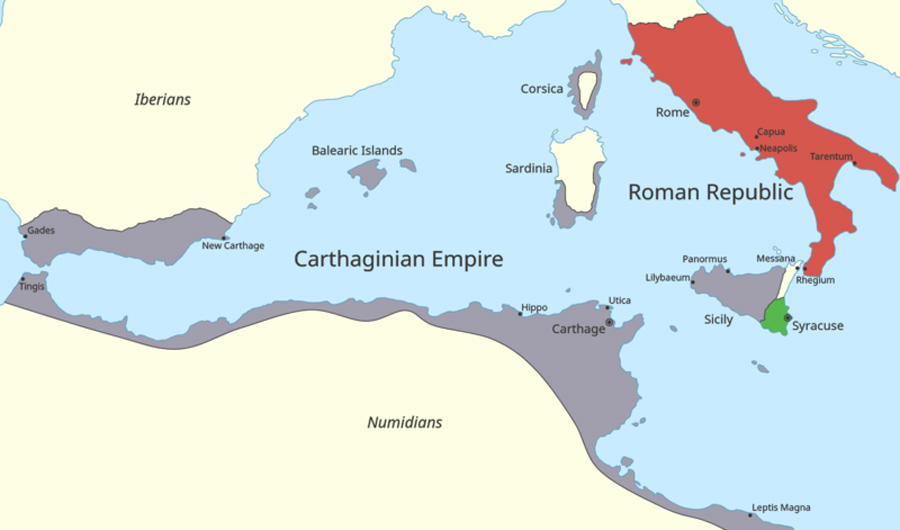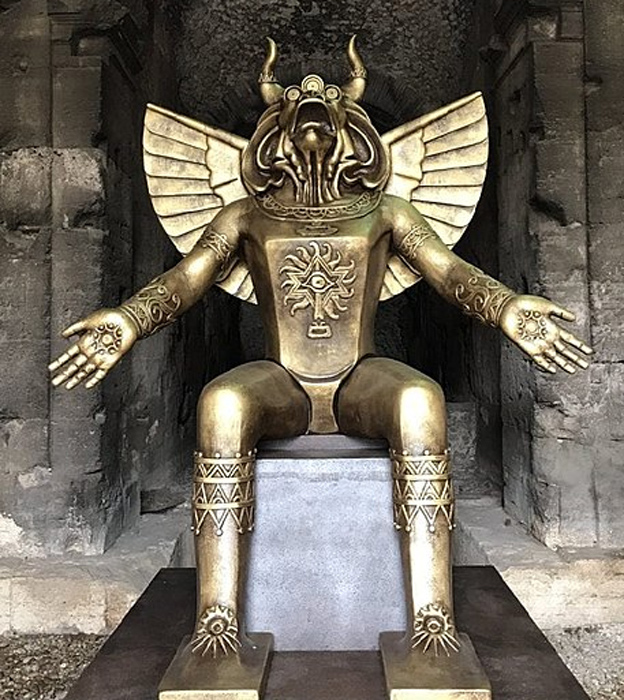Ancient Carthage was a city in modern Tunisia on the north coast of Africa that founded an empire, more than two millennia ago. It was founded by the Phoenicians, an ancient civilization of shipbuilders and traders from the eastern end of the Mediterranean.
It reached its height in the 4th century BC and was one of the largest metropolises in the world. As the center of the Carthaginian empire, it was the focus of a major power in the ancient world.
Carthage was a major rival to Rome, and the two rival civilizations were at war for more than a century before Rome’s victory and the destruction of Carthage in 146 BC. And with the loss of Carthage, much of their cultural distinctiveness was scattered or subsumed into the Roman empire, and lost.
One of the aspects of Carthaginian culture which was lost was the Tophet. A Tophet was a sacred site located outside of the city, where young children were buried. It has recently become the subject of historical controversy because ancient texts and evidence found by archaeologists suggest that those found in Carthage were that of child sacrifices.
Were the Carthaginians killing their children to appease their gods?
Origins of the Tophet
The word itself comes from the Hebrew “topheth”, an open area for sacrifice or more literally “drum” or “place of burning”. They were prominent around the eastern Mediterranean in the early 8th century BC.
The term originates with the Hebrew Bible, where it references a religious ceremony performed in Jerusalem which involves “passing a child through the fire”. The consensus among historians and scholars is that this refers to child sacrifice, and this is condemned by the Bible.
The sacrifices are made to a god “Moloch” although it is not clear if this was a deity, of the name of the rite performed at the Tophet. The rite was eventually outlawed and destroyed during the reign of King Josiah, whose religious reforms led to the compiling of the Old Testament.

The Tophet found near the ruins of Carthage has shown no signs so far that it houses any adult graves, and many of the grave stelae are dedicated to Baal and Tanit, the patron gods of Carthage. Roman sources also attest to child sacrifice among the Carthaginians, centuries after the Jews.
- Shrunken Heads: Torture, Magic, Or Grisly Souvenir?
- Asherah: did the God of the Hebrew Bible have a Wife?
But the Roman sources are inevitably biased when it comes to their long-term enemy. What then is there in the archaeological record to support their horrific claim about their great rivals?
The Carthage Tophet
The Tophet of Carthage was excavated between 1930 and 1970 and has revealed the bodies of several young infants, buried in small vaults with beads, amulets, and small animals. In later periods, found buried above the original layer of graves, sandstone markers were found covered with stucco colored yellow, red, or blue.

Narrow, limestone grave stelae appear above the graves, inscribed and decorated with the gods Baal and Tanit. The sign of Tanit was shown on the stela with a triangle with a disc at the apex and a line through the apex with upturned ends. It has been said to look like a child or a doll with outstretched arms.
There are records through Jewish and Christian writings referring to places of child sacrifices. The Roman writer Diodorus Siculus described the sacrifice of upper-class children to the deity, Baal, in 310 BC. This is often quoted as the main evidence for child sacrifice in this period.
Later descriptions made by writers, including those made in the 19th century, include the description of metal fire pits in the shape of a god that had grates that tipped infants into the fire. These are perhaps more fanciful descriptions.
These sacrifices were supposed to be used to appease the deities or to ask for favors from the gods. This is supported by some of the inscriptions found in the Tophet. Though in some sources it has been noted that small animals replaced the infants as sacrifices.
Archaeological Evidence
However many are unsatisfied with the conclusion that this was a place of child sacrifice, pointing out that the archaeological evidence is too sparse to make such conclusions. Some historians claim that the evidence is inconclusive and that the texts may have been written out of ulterior motives such as through Rome’s antagonistic feelings towards Carthage throughout their wars.

This is supported by the surviving records, in which the anti-Carthage bias among the Roman historians is clear. The textual evidence is only found in the Roman sources, and while the biblical sources confirm the concept of the Tophet, they do not mention Carthage but refer to a much older practice.
There is evidence, though, that children’s burial grounds were often separated from adult cemeteries regardless of how they died. Additionally, it was usual for offerings to be left at the grave even after the child had been buried.
- Cheated in Business or Unlucky in Love? Get Yourself a Curse Tablet!
- Laughing in the Face of Death? The Merry Cemetery of Romania
There is evidence of mass burials at Carthage and often the graves contained more than one child. This may indicate a disease that swept through the population of Carthage in this period. The inscriptions that refer to gifts and offerings may instead refer to sacrifice or may even refer to the hope of regeneration or fertility to the family who lost the child.
Sacrifice or Loss?
But to dismiss the site as a small cemetery for children is also problematic. A lecturer at Oxford University, Professor Josephine Quinn, has insisted that the Tophet was indeed a place indicating child sacrifice in Carthage. She claims, “this is something dismissed as black propaganda because in modern times people just didn’t want to believe it”. However, “when you pull together all the evidence, archaeological, epigraphic and literary – it is overwhelming and… conclusive”.
Professor Quinn has insisted that the inscriptions are unequivocal. Some explanations say the gods heard their voice and blessed them. It cannot be that so many children died conveniently at the exact time they were needed for a sacrifice.
Also, the animals that were found buried with the children showed signs of sacrificial offerings and are buried in the same way. Professor Quinn makes the final point that the cremation was very expensive and thus was not a common event. This indicates that it must have been an upper-class event.
Hundreds of remains were found and there were far too few to represent all of the stillbirth and infant deaths of a city as large as Carthage. 25 burials a year for a city of 500,000 people seem remarkably small, which might suggest this was a special place, not just another child cemetery.
The Debate Continues
The argument has raged for years despite all of the modern interest in the subject. Since scientists have found opposing conclusions to those of Professor Quinn. In 2010, a group of scientists published a paper indicating that the cremated remains did not indicate infant sacrifice.
Professor Quinn has now published her paper in the same magazine insisting that the scientists misinterpreted their findings. They overestimated the number of those who died before birth rather than those being murdered in infancy. Quinn believes this comes from child sacrifice being a taboo subject but insists that she is close to the truth.
Carthage was one of the most prominent empires in the world and at its peak was a rival for even the great Rome. Yet much of what is known of the empire comes from archaeological evidence and textual writings left by the Romans, their enemies.
This has meant that the history of Carthage often remains in a shroud of mystery. And among those mysteries is the question of what exactly the Tophet was for. Were the Carthaginians killing their children? We simply cannot say.
Top Image: The Romans attested that the Carthaginians practiced child sacrifice. Source: Patrick Gray / CC BY 2.0.
By Kurt Readman
